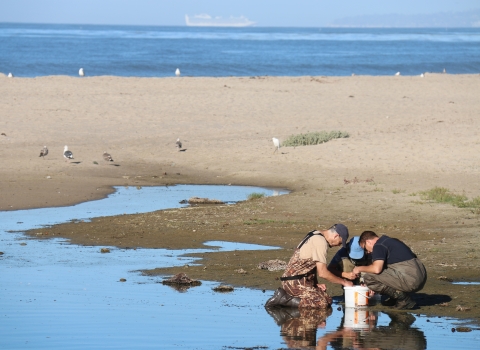Projects and Research
To make sure all species listed as threatened or endangered under the Endangered Species Act (ESA) continue to have the appropriate level of protection, the U.S. Fish and Wildlife Service (Service) conducts assessments of their status once every five years. We call these five-year reviews.
Search the database for available recovery plans and...
The Species Status Assessment framework is an analytical approach developed by the U.S. Fish & Wildlife Service to deliver foundational science for informing all Endangered Species Act (ESA) decisions. An SSA is a focused, repeatable, and rigorous scientific assessment. The result will be better assessments, improved and more transparent and defensible decision making, and...
When a species is proposed for listing as endangered or threatened under the Endangered Species Act (ESA), we identify specific areas that are essential to its conservation. These are the species’ critical habitat.
Critical habitat is a tool that supports the continued conservation of imperiled species by guiding cooperation within the federal government. Designations affect...
In order to provide the best possible conservation for our nation's imperiled species, we developed a National Listing Workplan (Workplan) for addressing domestic listing and critical habitat decisions under the Endangered Species Act (ESA).
The U.S. Fish and Wildlife Service's (Service) priority is to implement and administer the ESA effectively and efficiently. The...
Working with partners, the U.S. Fish and Wildlife Service (Service) uses a range of conservation tools to recover threatened and endangered species to ensure that they are able to survive on their own in the wild. These tools can include acquiring and restoring habitat, removing invasive species, conducting surveys, monitoring individual populations, and breeding species in captivity to...







